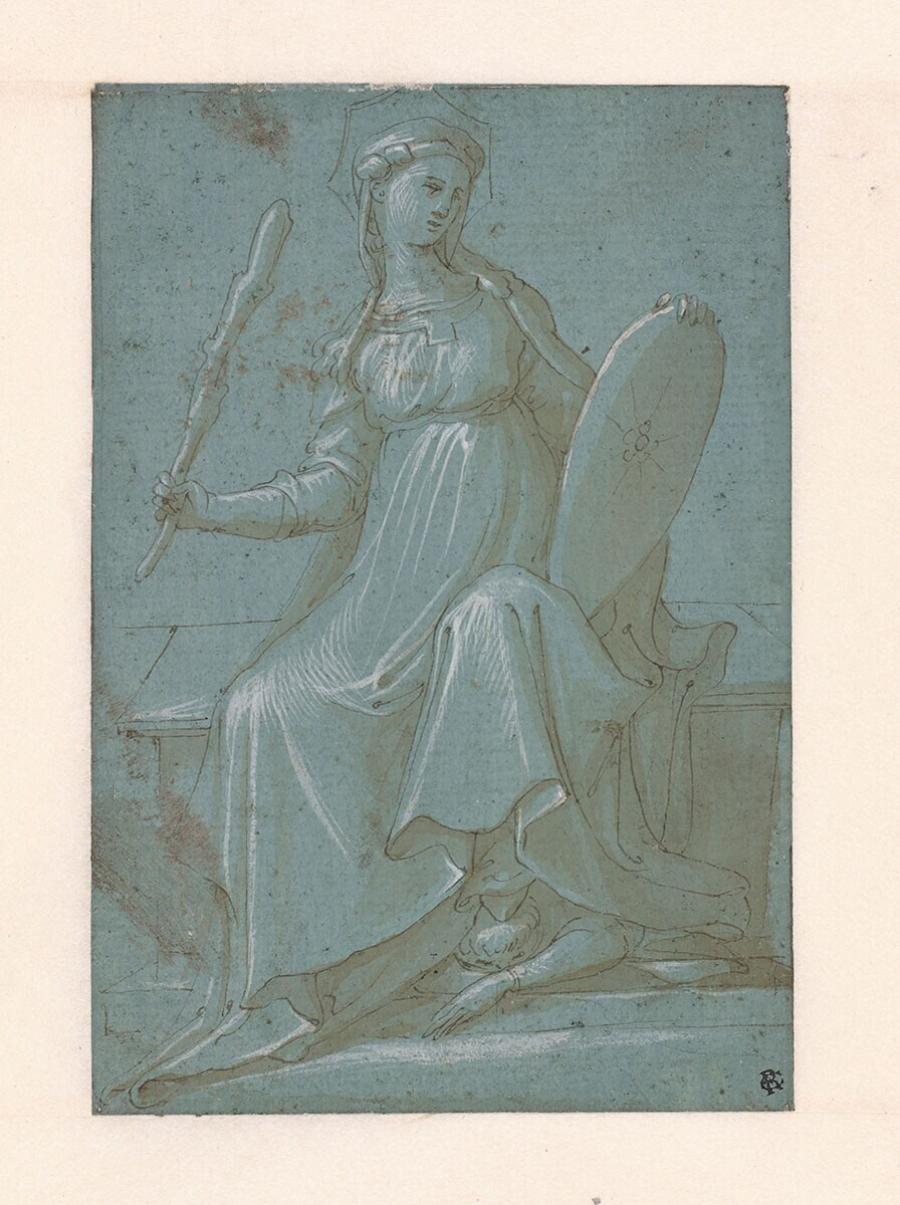Specifications
| Title | The Personification of Fortitude |
|---|---|
| Material and technique | Pen and brown ink, brown wash, heightened with white, on green-blue prepared paper (verso: light gray-purple prepared paper) |
| Object type |
Drawing
> Two-dimensional object
> Art object
|
| Location | This object is in storage |
| Dimensions |
Height 141 mm Width 96 mm |
|---|---|
| Artists |
Copy after:
Giovanni dal Ponte
Previously attributed: Pesellino (Francesco di Stefano) |
| Accession number | I 533 (PK) |
| Credits | Loan Stichting Museum Boijmans Van Beuningen (former Koenigs collection), 1940 |
| Department | Drawings & Prints |
| Acquisition date | 1940 |
| Creation date | in circa 1475-1500 |
| Watermark | none (vH, 3P) |
| Inscriptions | 'Benozzo Gozolli? 1420-1498' (removed mount, below right, pencil), 'Ecole Florentine XVI', '97 x 140' (idem, verso, above right, pencil), 'nr. 129 Vente Drouot 28.11.28' (idem, verso, centre right, pencil), '40' (idem, verso, above left, pencil), 'Me' (idem, verso, above centre, pencil) |
| Collector | Collector / Franz Koenigs |
| Mark | E. Rodrigues (L.897), F.W. Koenigs (L.1023a) on removed backing sheet) |
| Provenance | Eugène Rodrigues (1853-1928, L.897), Paris; his sale, Paris (Godefroy, Huteau) 28-29.11.1928, lot 129 (attributed to Benozzo Gozzoli); Franz W. Koenigs (1881-1941, L.1023a), Haarlem, acquired in 1928 (Florentine, c. 1450); D.G. van Beuningen (1877-1955), Rotterdam, acquired with the Koenigs Collection in 1940 and donated to Stichting Museum Boijmans Van Beuningen |
| Exhibitions | Rotterdam 2018 (Jongerius) |
| Research |
Show research Italian Drawings 1400-1600 |
| Literature | Degenhart/Schmitt 1968, vol. I-2, nr. 547, vol. I-4, pl. 370c (Pesellino follower); Byam Shaw 1983, pp. 4-6 under no. 2 (copies by others after Giovanni del Ponte); Paris 1984, pp. 3-4 under no. 2; Forlani Tempesti 1991, p. 181 n. 5, under no. 64 |
| Material | |
| Object | |
| Technique |
Prepare
> Prepared
> Shaping techniques
> General technique
> Technique
> Material and technique
Prepare
> Prepared
> Shaping techniques
> General technique
> Technique
> Material and technique
Highlight
> Painting technique
> Technique
> Material and technique
Brown wash
> Washing
> Wash
> Drawing technique
> Technique
> Material and technique
|
| Geographical origin | Italy > Southern Europe > Europe |
| Place of manufacture | Florence > Tuscany > Italy > Southern Europe > Europe |
Do you have corrections or additional information about this work? Please, send us a message
























